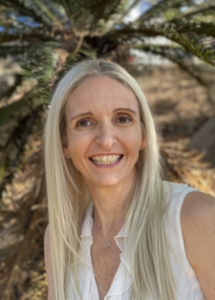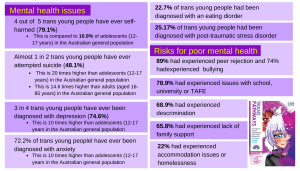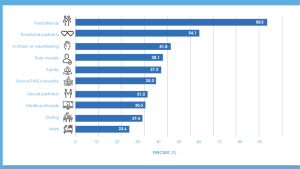What is Gender Diversity? It can be seen as an umbrella term that is used to describe gender identities that demonstrate a diversity in expression, beyond the binary framework of male and female.
How children and teenagers express gender?
Gender expression is how your child shows their gender. This might be through their name, clothes, behaviours, hairstyle and voice. Almost all children begin expressing their gender identity from around 2 to 3 years old. They do this in the way they talk about themselves and through the clothes they choose. Children can be very firm about their gender from an early age.
Many gender diverse children also express their gender identity around the same age and can be very firm and get upset, angry or annoyed, when people refer to them as a boy or a girl. They may refuse to wear particular clothes and say they are a different gender. But as everyone is different, some children may start talking about their gender in primary school, at puberty… There is no rule.
What is Gender Diversity?
Gender diversity refers to gender non-conformity with or without gender dysphoria and includes aspects of gender identity, expression or behaviour that do not conform to societal gender expectations based on birth anatomy.
What is Gender Dysphoria?
Gender dysphoria is ‘’a marked incongruence between one’s experienced/expressed gender and assigned gender, of a least 6 months duration’’. In children, the desire to be of the other gender must be present, verbalised and cause clinically significant distress or impairment in social, occupational, or other important areas of functioning.
Gender dysphoria is not a psychiatric disorder/diagnosis. However, it is frequently associated with psychological distress such as anxiety, depression etc. Gender dysphoria is when a child feels distressed (the level of distress can range from manageable to debilitating) because their gender identity differs from their sex given at birth. Not all gender diverse people have gender dysphoria.
Gender diversity is not a psychiatric disorder. It is not pathological.
Statistics on Gender Diversity and Mental Health
Here are some mental health statistics from a 2017 Australian study with young people aged 14 to 25 and identifying as trans or gender diverse: (you will find more information by clicking on this link trans-pathways-report.pdf (telethonkids.org.au)
Strauss, P., Cook, A., Winter, S., Watson, V., Wright Toussaint, D., Lin, A. (2017) Trans Pathways: the mental health experience and care pathways of trans young people. Summary of result. Telethon Kids Institute, Perth, Australia.
Mental health difficulties for Gender Diverse Youth
- 80% have self-harmed
- compared to 11% of non-trans
- Over 50% attempt suicide
- that is 20 times higher than non-trans
- 75% are diagnosed with depression
- which is 10 times higher than non-trans
- 72% have anxiety
- which is 10 times higher than non-trans
- 23% have been diagnosed with an eating disorder
- 25% have been diagnosed with PTSD
- Robust finding of a connection between gender non-conforming and ASD
- ASD children are 7 times more likely to be gender non-conforming
- Children and adolescents attending gender clinics are 6-15 times more likely to have ASD
Protective factors identified in that survey:
Fig 5 page 67
When working with gender diverse children and teenagers, my role as a psychologist is to support the young person and their family with things such as peer/friendship difficulties, bullying, discrimination, abuse, humiliation, lack of understanding from school, the use of the correct pronoun, low mood… and so much more. So what is gender diversity?..it is never a pathology.
Here are some websites you may also find useful:
from-blues-to-rainbows-report-sep2014.pdf (latrobe.edu.au)
trans-pathways-report.pdf (telethonkids.org.au)
 Author: Meggy Delaunay, PG Dip Psych Practice, PG Dip Dev Psych, M Genetic Psych, B Psych, MAPS.
Author: Meggy Delaunay, PG Dip Psych Practice, PG Dip Dev Psych, M Genetic Psych, B Psych, MAPS.
Meggy Delaunay is a psychologist who primarily works with children, adolescents and young adults. She is a registered Psychologist in Australia, New Zealand and France, and can provide therapy sessions in English and French.
To make an appointment try Online Booking. Alternatively, you can call Vision Psychology Brisbane on (07) 3088 5422.
References
Strauss, P., Cook, A., Winter, S., Watson, V., Wright Toussaint, D., Lin, A. (2017). Trans Pathways: the mental health experiences and care pathways of trans young people. Summary of results. Telethon Kids Institute, Perth, Australia.


